- Home
- H. P. Lovecraft
The Complete H.P. Lovecraft Collection (Xist Classics) Page 48
The Complete H.P. Lovecraft Collection (Xist Classics) Read online
Page 48
So matters went till that night when Williams brought home the infamous Necronomicon of the mad Arab Abdul Alhazred. He had known of the dreaded volume since his sixteenth year, when his dawning love of the bizarre had led him to ask queer questions of a bent old bookseller in Chandos Street; and he had always wondered why men paled when they spoke of it. The old bookseller had told him that only five copies were known to have survived the shocked edicts of the priests and lawgivers against it and that all of these were locked up with frightened care by custodians who had ventured to begin a reading of the hateful black-letter. But now, at last, he had not only found an accessible copy but had made it his own at a ludicrously low figure. It was at a Jew’s shop in the squalid precincts of Clare Market, where he had often bought strange things before, and he almost fancied the gnarled old Levite smiled amidst tangles of beard as the great discovery was made. The bulky leather cover with the brass clasp had been so prominently visible, and the price was so absurdly slight.
The one glimpse he had had of the title was enough to send him into transports, and some of the diagrams set in the vague Latin text excited the tensest and most disquieting recollections in his brain. He felt it was highly necessary to get the ponderous thing home and begin deciphering it, and bore it out of the shop with such precipitate haste that the old Jew chuckled disturbingly behind him. But when at last it was safe in his room he found the combination of black-letter and debased idiom too much for his powers as a linguist, and reluctantly called on his strange, frightened friend for help with the twisted, mediaeval Latin. Lord Northam was simpering inanities to his streaked cat, and started violently when the young man entered. Then he saw the volume and shuddered wildly, and fainted altogether when Williams uttered the title. It was when he regained his senses that he told his story; told his fantastic figment of madness in frantic whispers, lest his friend be not quick to burn the accursed book and give wide scattering to its ashes.
***
There must, Lord Northam whispered, have been something wrong at the start; but it would never have come to a head if he had not explored too far. He was the nineteenth Baron of a line whose beginnings went uncomfortably far back into the past—unbelievably far, if vague tradition could be heeded, for there were family tales of a descent from pre-Saxon times, when a certain Cnaeus Gabinius Capito, military tribune in the Third Augustan Legion then stationed at Lindum in Roman Britain, had been summarily expelled from his command for participation in certain rites unconnected with any known religion. Gabinius had, the rumour ran, come upon a cliffside cavern where strange folk met together and made the Elder Sign in the dark; strange folk whom the Britons knew not save in fear, and who were the last to survive from a great land in the west that had sunk, leaving only the islands with the raths and circles and shrines of which Stonehenge was the greatest. There was no certainty, of course, in the legend that Gabinius had built an impregnable fortress over the forbidden cave and founded a line which Pict and Saxon, Dane and Norman were powerless to obliterate; or in the tacit assumption that from this line sprang the bold companion and lieutenant of the Black Prince whom Edward Third created Baron of Northam. These things were not certain, yet they were often told; and in truth the stonework of Northam Keep did look alarmingly like the masonry of Hadrian’s Wall. As a child Lord Northam had had peculiar dreams when sleeping in the older parts of the castle, and had acquired a constant habit of looking back through his memory for half-amorphous scenes and patterns and impressions which formed no part of his waking experience. He became a dreamer who found life tame and unsatisfying; a searcher for strange realms and relationships once familiar, yet lying nowhere in the visible regions of earth.
Filled with a feeling that our tangible world is only an atom in a fabric vast and ominous, and that unknown demesnes press on and permeate the sphere of the known at every point, Northam in youth and young manhood drained in turn the founts of formal religion and occult mystery. Nowhere, however, could he find ease and content; and as he grew older the staleness and limitations of life became more and more maddening to him. During the ’nineties he dabbled in Satanism, and at all times he devoured avidly any doctrine or theory which seemed to promise escape from the close vistas of science and the dully unvarying laws of Nature. Books like Ignatius Donnelly’s chimerical account of Atlantis he absorbed with zest, and a dozen obscure precursors of Charles Fort enthralled him with their vagaries. He would travel leagues to follow up a furtive village tale of abnormal wonder, and once went into the desert of Araby to seek a Nameless City of faint report, which no man has ever beheld. There rose within him the tantalising faith that somewhere an easy gate existed, which if one found would admit him freely to those outer deeps whose echoes rattled so dimly at the back of his memory. It might be in the visible world, yet it might be only in his mind and soul. Perhaps he held within his own half-explored brain that cryptic link which would awaken him to elder and future lives in forgotten dimensions; which would bind him to the stars, and to the infinities and eternities beyond them.
The Diary of Alonzo Typer
EDITOR’S NOTE: Alonzo Hasbrouck Typer of Kingston, N.Y., was last seen and recognised on April 17, 1908, around noon, at the Hotel Richmond in Batavia. He was the only survivor of an ancient Ulster County family, and was fifty-three years old at the time of his disappearance.
Mr. Typer was educated privately and at Columbia and Heidelberg Universities. All his life was spent as a student; the field of his researches including many obscure and generally feared borderlands of human knowledge. His papers on vampirism, ghouls, and poltergeist phenomena were privately printed after rejection by many publishers. He resigned from the Society for Psychical Research in 1902 after a series of peculiarly bitter controversies.
At various times Mr. Typer travelled extensively, sometimes dropping out of sight for long periods. He is known to have visited obscure spots in Nepal, India, Thibet, and Indo-China, and passed most of the year 1899 on mysterious Easter Island. The extensive search for Mr. Typer after his disappearance yielded no results, and his estate was divided among distant cousins in New York City.
The diary herewith presented was allegedly found in the ruins of a large country house near Attica, N.Y., which had borne a curiously sinister reputation for generations before its collapse. The edifice was very old, antedating the general white settlement of the region, and had formed the home of a strange and secretive family named van der Heyl, which had migrated from Albany in 1746 under a curious cloud of witchcraft suspicion. The structure probably dated from about 1760.
Of the history of the van der Heyls very little is known. They remained entirely aloof from their normal neighbours, employed negro servants brought directly from Africa and speaking little English, and educated their children privately and at European colleges. Those of them who went out into the world were soon lost to sight, though not before gaining evil repute for association with Black Mass groups and cults of even darker significance.
Around the dreaded house a straggling village arose, populated by Indians and later by renegades from the surrounding country, which bore the dubious name of Chorazin. Of the singular hereditary strains which afterward appeared in the mixed Chorazin villagers, several monographs have been written by ethnologists. Just behind the village, and in sight of the van der Heyl house, is a steep hill crowned with a peculiar ring of ancient standing stones which the Iroquois always regarded with fear and loathing. The origin and nature of the stones, whose date, according to archaeological and climatological evidence, must be fabulously early, is a problem still unsolved.
From about 1795 onward, the legends of the incoming pioneers and later population have much to say about strange cries and chants proceeding at certain seasons from Chorazin and from the great house and hill of standing stones; though there is reason to suppose that the noises ceased about 1872, when the entire van der Heyl household—servants and all—suddenly and simultaneously disappeared.
Thencef
orward the house was deserted; for other disastrous events—including three unexplained deaths, five disappearances, and four cases of sudden insanity—occurred when later owners and interested visitors attempted to stay in it. The house, village, and extensive rural areas on all sides reverted to the state and were auctioned off in the absence of discoverable van der Heyl heirs. Since about 1890 the owners (successively the late Charles A. Shields and his son Oscar S. Shields, of Buffalo) have left the entire property in a state of absolute neglect, and have warned all inquirers not to visit the region.
Of those known to have approached the house during the last forty years, most were occult students, police officers, newspaper men, and odd characters from abroad. Among the latter was a mysterious Eurasian, probably from Cochin-China, whose later appearance with blank mind and bizarre mutilations excited wide press notice in 1903.
Mr. Typer’s diary—a book about 6 × 3½ inches in size, with tough paper and an oddly durable binding of thin sheet metal—was discovered in the possession of one of the decadent Chorazin villagers on Nov. 16, 1935, by a state policeman sent to investigate the rumoured collapse of the deserted van der Heyl mansion. The house had indeed fallen, obviously from sheer age and decrepitude, in the severe gale of Nov. 12. Disintegration was peculiarly complete, and no thorough search of the ruins could be made for several weeks. John Eagle, the swarthy, simian-faced, Indian-like villager who had the diary, said that he found the book quite near the surface of the debris, in what must have been an upper front room.
Very little of the contents of the house could be identified, though an enormous and astonishingly solid brick vault in the cellar (whose ancient iron door had to be blasted open because of the strangely figured and perversely tenacious lock) remained intact and presented several puzzling features. For one thing, the walls were covered with still undeciphered hieroglyphs roughly incised in the brickwork. Another peculiarity was a huge circular aperture in the rear of the vault, blocked by a cave-in evidently caused by the collapse of the house.
But strangest of all was the apparently recent deposit of some foetid, slimy, pitch-black substance on the flagstoned floor, extending in a yard-broad, irregular line with one end at the blocked circular aperture. Those who first opened the vault declared that the place smelled like the snake-house at a zoo.
The diary, which was apparently designed solely to cover an investigation of the dreaded van der Heyl house by the vanished Mr. Typer, has been proved by handwriting experts to be genuine. The script shews signs of increasing nervous strain as it progresses toward the end, in places becoming almost illegible. Chorazin villagers—whose stupidity and taciturnity baffle all students of the region and its secrets—admit no recollection of Mr. Typer as distinguished from other rash visitors to the dreaded house.
The text of the diary is here given verbatim and without comment. How to interpret it, and what, other than the writer’s madness, to infer from it, the reader must decide for himself. Only the future can tell what its value may be in solving a generation-old mystery. It may be remarked that genealogists confirm Mr. Typer’s belated memory in the matter of Adriaen Sleght.
THE DIARY
April 17, 1908
Arrived here about 6 p.m. Had to walk all the way from Attica in the teeth of an oncoming storm, for no one would rent me a horse or rig, and I can’t run an automobile. This place is even worse than I had expected, and I dread what is coming, even though I long at the same time to learn the secret. All too soon will come the night—the old Walpurgis Sabbat horror—and after that time in Wales I know what to look for. Whatever comes, I shall not flinch. Prodded by some unfathomable urge, I have given my whole life to the quest of unholy mysteries. I came here for nothing else, and will not quarrel with fate.
It was very dark when I got here, though the sun had by no means set. The storm-clouds were the densest I had ever seen, and I could not have found my way but for the lightning flashes. The village is a hateful little backwater, and its few inhabitants no better than idiots. One of them saluted me in a queer way, as if he knew me. I could see very little of the landscape—just a small, swampy valley of strange brown weed-stalks and dead fungi surrounded by scraggly, evilly twisted trees with bare boughs. But behind the village is a dismal-looking hill on whose summit is a circle of great stones with another stone at the centre. That, without question, is the vile primordial thing V——— told me about at the N——— estbat.
The great house lies in the midst of a park all overgrown with curious-looking briers. I could scarcely break through, and when I did the vast age and decrepitude of the building almost stopped me from entering. The place looked filthy and diseased, and I wondered how so leprous a bulk could hang together. It is wooden; and though its original lines are hidden by a bewildering tangle of wings added at various dates, I think it was first built in the square colonial fashion of New England. Probably that was easier to build than a Dutch stone house—and then, too, I recall that Dirck van der Heyl’s wife was from Salem, a daughter of the unmentionable Abaddon Corey. There was a small pillared porch, and I got under it just as the storm burst. It was a fiendish tempest—black as midnight, with rain in sheets, thunder and lightning like the day of general dissolution, and a wind that actually clawed at me. The door was unlocked, so I took out my electric torch and went inside. Dust was inches thick on floor and furniture, and the place smelled like a mould-caked tomb. There was a hall reaching all the way through, and a curving staircase on the right. I ploughed a way upstairs and selected this front room to camp out in. The whole place seems fully furnished, though most of the furniture is breaking down. This is written at eight o’clock, after a cold meal from my travelling-case. After this the village people will bring me supplies—though they won’t agree to come any closer than the ruins of the park gate until (as they say) later. I wish I could get rid of an unpleasant feeling of familiarity with this place.
Later
I am conscious of several presences in this house. One in particular is decidedly hostile toward me—a malevolent will which is seeking to break down my own and overcome me. I must not countenance this for an instant, but must use all my forces to resist it. It is appallingly evil, and definitely non-human. I think it must be allied to powers outside earth—powers in the spaces behind time and beyond the universe. It towers like a colossus, bearing out what is said in the Aklo writings. There is such a feeling of vast size connected with it that I wonder these chambers can contain its bulk—and yet it has no visible bulk. Its age must be unutterably vast—shockingly, indescribably so.
April 18
Slept very little last night. At 3 a.m. a strange, creeping wind began to pervade the whole region—ever rising until the house rocked as if in a typhoon. As I went down the staircase to see to the rattling front door the darkness took half-visible forms in my imagination. Just below the landing I was pushed violently from behind—by the wind, I suppose, though I could have sworn I saw the dissolving outlines of a gigantic black paw as I turned quickly about. I did not lose my footing, but safely finished the descent and shot the heavy bolt of the dangerously shaking door.
I had not meant to explore the house till dawn; yet now, unable to sleep again and fired with mixed terror and curiosity, I felt reluctant to postpone my search. With my powerful torch I ploughed through the dust to the great south parlour, where I knew the portraits would be. There they were, just as V——— had said, and as I seemed to know from some obscurer source as well. Some were so blackened, mouldy, and dust-clouded that I could make little or nothing of them, but from those I could trace I recognised that they were indeed of the hateful line of the van der Heyls. Some of the paintings seemed to suggest faces I had known; but just what faces, I could not recall.
The outlines of that frightful hybrid Joris—spawned in 1773 by old Dirck’s youngest daughter—were clearest of all, and I could trace the green eyes and the serpent look in his face. Every time I shut off the flashlight that face would seem t
o glow in the dark until I half fancied it shone with a faint, greenish light of its own. The more I looked, the more evil it seemed, and I turned away to avoid hallucinations of changing expression.
But that to which I turned was even worse. The long, dour face, small, closely set eyes, and swine-like features identified it at once, even though the artist had striven to make the snout look as human as possible. This was what V——— had whispered about. As I stared in horror, I thought the eyes took on a reddish glow—and for a moment the background seemed replaced by an alien and seemingly irrelevant scene—a lone, bleak moor beneath a dirty yellow sky, whereon grew a wretched-looking blackthorn bush. Fearing for my sanity, I rushed from that accursed gallery to the dust-cleared corner upstairs where I have my “camp”.
Later
Decided to explore some of the labyrinthine wings of the house by daylight. I cannot get lost, for my footprints are distinct in the ankle-deep dust—and I can trace other identifying marks when necessary. It is curious how easily I learn the intricate windings of the corridors. Followed a long, outflung northerly “ell” to its extremity, and came to a locked door, which I forced. Beyond was a very small room quite crowded with furniture, and with the panelling badly worm-eaten. On the outer wall I spied a black space behind the rotting woodwork, and discovered a narrow secret passage leading downward to unknown black depths. It was a steeply inclined chute or tunnel without steps or hand-holds, and I wondered what its use could have been.

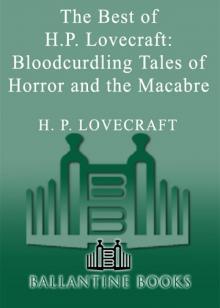 The Best of H.P. Lovecraft
The Best of H.P. Lovecraft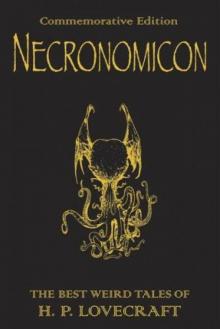 The Definitive H.P. Lovecraft: 67 Tales Of Horror In One Volume
The Definitive H.P. Lovecraft: 67 Tales Of Horror In One Volume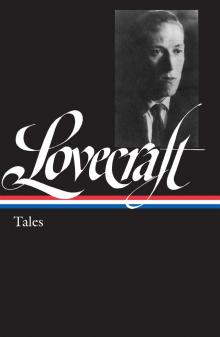 The Complete Works of H.P. Lovecraft
The Complete Works of H.P. Lovecraft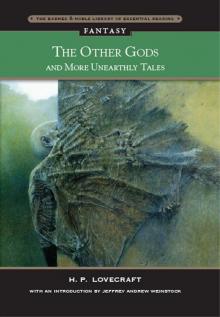 Other Gods and More Unearthly Tales
Other Gods and More Unearthly Tales Lovecraft's Fiction Volume I, 1905-1925
Lovecraft's Fiction Volume I, 1905-1925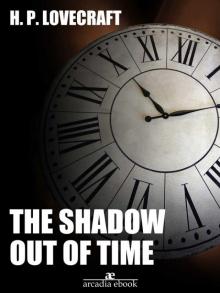 The Shadow Out of Time
The Shadow Out of Time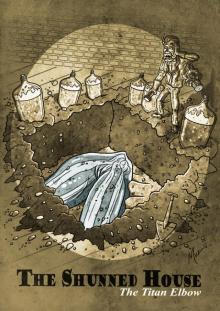 The Shunned House
The Shunned House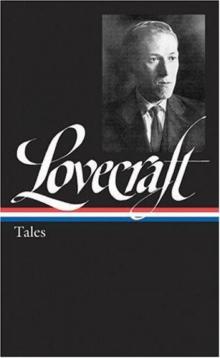 Lovecraft's Fiction Volume II, 1926-1928
Lovecraft's Fiction Volume II, 1926-1928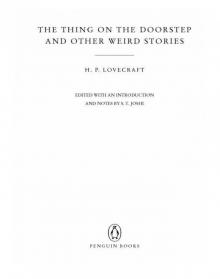 The Thing on the Doorstep and Other Weird Stories
The Thing on the Doorstep and Other Weird Stories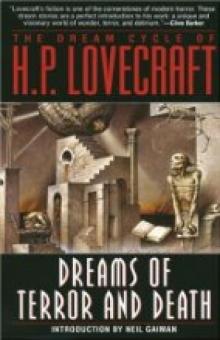 Dream Cycle of H. P. Lovecraft: Dreams of Terror and Death
Dream Cycle of H. P. Lovecraft: Dreams of Terror and Death Great Tales of Horror
Great Tales of Horror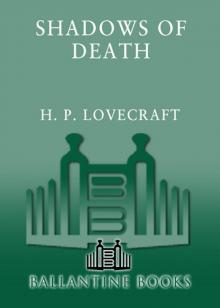 Shadows of Death
Shadows of Death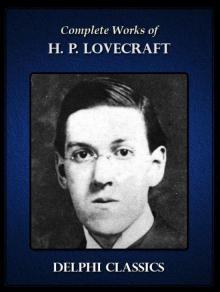 Delphi Complete Works of H. P. Lovecraft (Illustrated)
Delphi Complete Works of H. P. Lovecraft (Illustrated)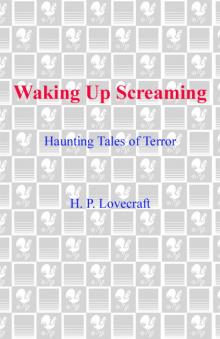 Waking Up Screaming: Haunting Tales of Terror
Waking Up Screaming: Haunting Tales of Terror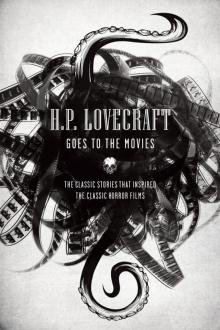 H.P. Lovecraft Goes to the Movies
H.P. Lovecraft Goes to the Movies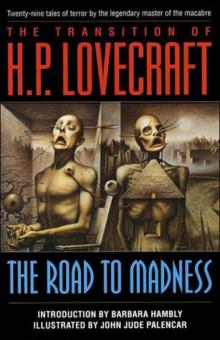 The Road to Madness
The Road to Madness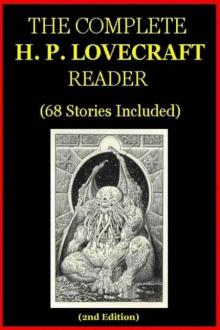 The Complete H.P. Lovecraft Reader (68 Stories)
The Complete H.P. Lovecraft Reader (68 Stories)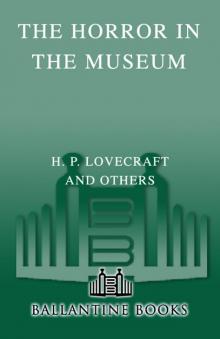 The Horror in the Museum
The Horror in the Museum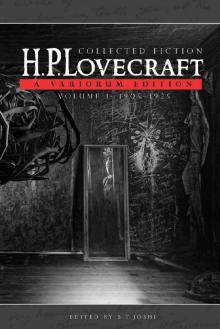 Collected Fiction Volume 1 (1905-1925): A Variorum Edition
Collected Fiction Volume 1 (1905-1925): A Variorum Edition Lovecrafts_Fiction, vol.I_1905-1925
Lovecrafts_Fiction, vol.I_1905-1925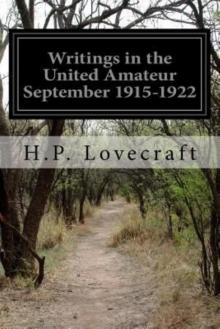 Writings in the United Amateur, 1915-1922
Writings in the United Amateur, 1915-1922 H.P. Lovecraft: The Complete Works
H.P. Lovecraft: The Complete Works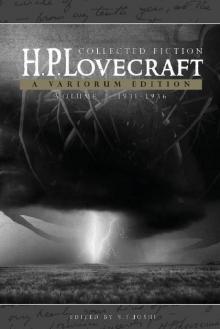 Collected Fiction Volume 3 (1931-1936): A Variorum Edition
Collected Fiction Volume 3 (1931-1936): A Variorum Edition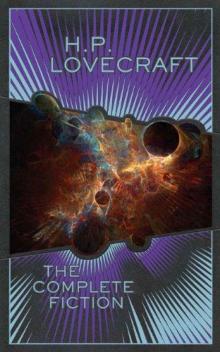 H.P. Lovecraft: The Complete Fiction
H.P. Lovecraft: The Complete Fiction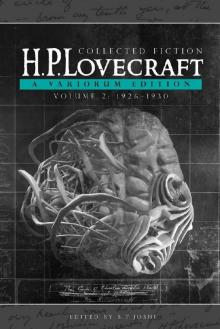 Collected Fiction Volume 2 (1926-1930): A Variorum Edition
Collected Fiction Volume 2 (1926-1930): A Variorum Edition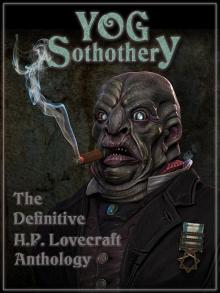 Yog Sothothery - The Definitive H.P. Lovecraft Anthology
Yog Sothothery - The Definitive H.P. Lovecraft Anthology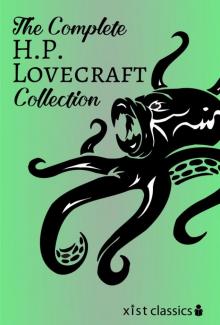 The Complete H.P. Lovecraft Collection (Xist Classics)
The Complete H.P. Lovecraft Collection (Xist Classics)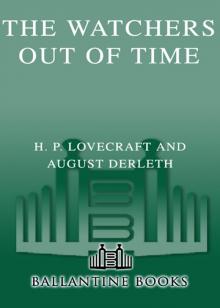 The Watchers Out of Time
The Watchers Out of Time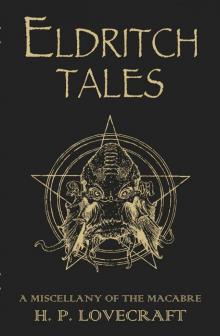 Eldritch Tales
Eldritch Tales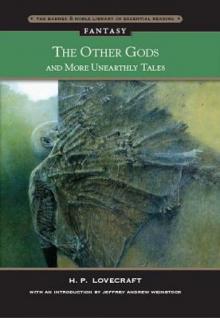 The Other Gods And More Unearthly Tales
The Other Gods And More Unearthly Tales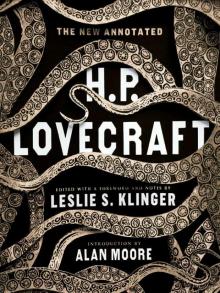 The New Annotated H. P. Lovecraft
The New Annotated H. P. Lovecraft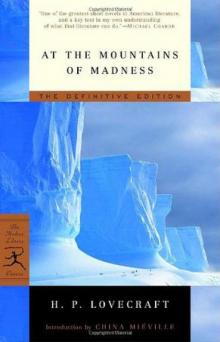 At the mountains of madness
At the mountains of madness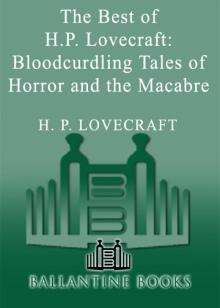 Bloodcurdling Tales of Horror and the Macabre
Bloodcurdling Tales of Horror and the Macabre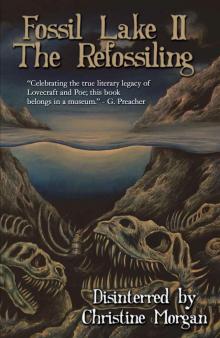 Fossil Lake II: The Refossiling
Fossil Lake II: The Refossiling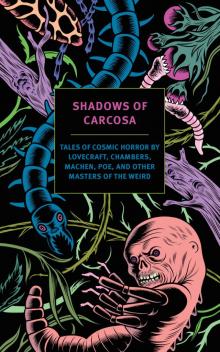 Shadows of Carcosa: Tales of Cosmic Horror by Lovecraft, Chambers, Machen, Poe, and Other Masters of the Weird
Shadows of Carcosa: Tales of Cosmic Horror by Lovecraft, Chambers, Machen, Poe, and Other Masters of the Weird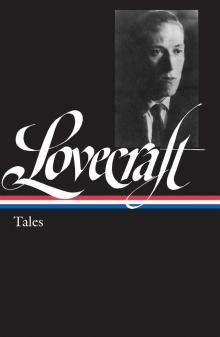 H. P. Lovecraft
H. P. Lovecraft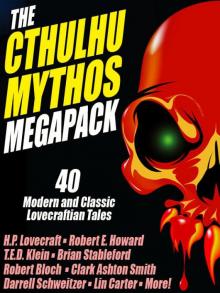 The Cthulhu Mythos Megapack
The Cthulhu Mythos Megapack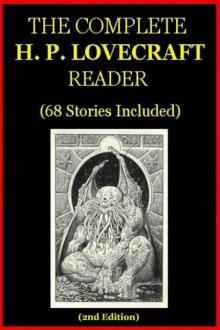 The Complete H. P. Lovecraft Reader (2nd Edition)
The Complete H. P. Lovecraft Reader (2nd Edition)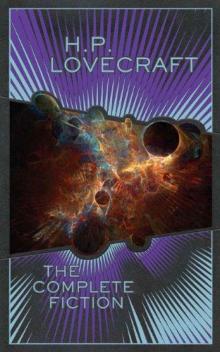 The Complete Fiction
The Complete Fiction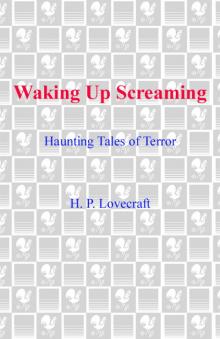 Waking Up Screaming
Waking Up Screaming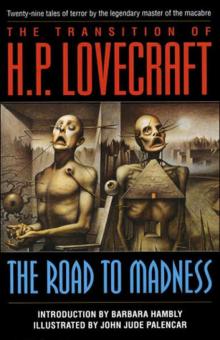 Transition of H. P. Lovecraft
Transition of H. P. Lovecraft![[1935] The Shadow Out of Time Read online](http://i1.bookreadfree.com/i2/04/12/1935_the_shadow_out_of_time_preview.jpg) [1935] The Shadow Out of Time
[1935] The Shadow Out of Time The Horror Megapack
The Horror Megapack